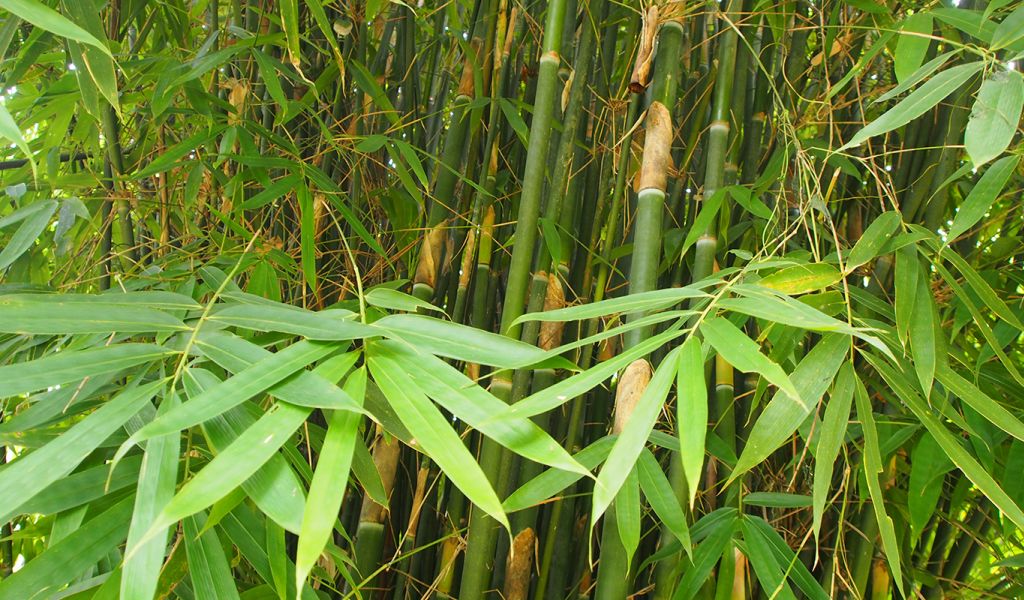ໄມ້ຊອດ / Membranous Bamboo
APA 6th ed. ໄມ້ຊອດ / Membranous Bamboo. (2021, August 31). Retrieved from https://www.phakhaolao.la/kb/0000056
MLA 8th ed. ໄມ້ຊອດ / Membranous Bamboo. Pha Khao Lao, 31 August 2021, https://www.phakhaolao.la/kb/0000056.
Chicago 17th ed. Pha Khao Lao. 2021. "ໄມ້ຊອດ / Membranous Bamboo." Published August 31, 2021. https://www.phakhaolao.la/kb/0000056.

The average cluster diameter of the mai sot variety is about 1 m-1.5 m and its average height 14 m. Canes have a diameter of around 4-6 cm, a wall thickness of c.0.4 cm, and internodes of 50-60 cm with a green pattern on the stems. The first branch grows 4-5 m from the ground, while its clump sheets are about 21 x 30 cm, black and pale yellow, and hairy from the middle on. The tip clump sheet is droopy, measures about 9 x 11 cm and has hairy auricles of 2.5 x 9 cm. The average number of leaflets is 9-13 with leaflets of 6 x 30 cm. Shoots are bitter in taste. The taxonomy of this species is not clear yet, but the drooping and large tip of the clump sheet is characteristic of Oxytenanthera. Clusters of mai sot are very thick, with up to 200 stems when never harvested. Black hairs from all parts of the plant cause irritation to the skin. It is found mostly in flat areas, on sandy soil in mixed forest at elevations of about 100-500 m all across the country.
Young canes are suitable for handicrafts and older canes for house walls (lasting for ten years), floor mats, poles and fishing tools. Harvesting is year-round for clump aged three years and older. Shoots are edible and harvested from early June to September. Clump are heavily harvested and collectors should only select three- to five-year old clump. Shoots are harvested moderately, and sustainability is not a problem due to the species’ vigorous rate of production. Propagation by stumps is easy, but by seed is limited as harvest of seed is difficult. There is as yet no record of mai sot propagation in Laos.
